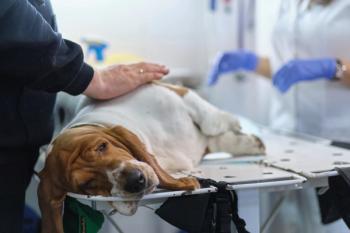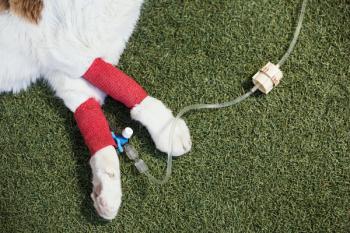
Surviving bartonellosis
National Report - Her medical battle with bartonellosis lasted for years. Ironically, it took a horse throwing her, fracturing her shoulder, for physicians to make an accurate diagnosis.
National Report- Her medical battle with bartonellosis lasted for years. Ironically, it took a horse throwing her, fracturing her shoulder, for physicians to make an accurate diagnosis.
Veterinarian Wendy Walker of Olney, Md. can't pinpoint when she contracted Bartonella, but it has changed her life in ways few could imagine.
Her infection resulted in a kind of cascade of medical problems that tested our human medical and diagnostic system, and resulted in revolving door of specialists, surgeons and doctors all stymied by her chronic condition.
"Bartonella can result in just such a horrible disease. It is such an invasive bug," she tells DVM Newsmagazine.
The symptoms for Walker started as fibromyalgia. "No one could put a finger on what my problem was."
She then lost the use of her right arm. Consults with orthopedic and neurosurgeons hatched a short-lived plan to fuse her neck. Before surgery, she was told by a prominent neurosurgeon, "I don't know what you have, but it is not a surgical fix."
Trigger point injections (30 at a time) was the only way she could use her ailing arm. Her myofacial pain could only be characterized as "horrible."
"Nobody really knew what was going on. I was tested for rheumatoid arthritis, lupus and others. She even tested for cat-scratch disease, but at that time, the tests came back negative.
In the ensuing years, Walker went through four arthroscopic knee surgeries. In 2007, her horse threw her and seriously fractured her shoulder. The fracture was so bad she had to resign her presidency of the Maryland Veterinary Medical Association. Within 24 hours, her knee blew up to the size of a basketball. "It was more painful than the fracture of my arm," she recalls. "They tapped it, and fluid shot across the room. They said, 'you have Lyme disease.' " They were wrong, but the resulting injuries meant three more knee surgeries and a shoulder surgery.
Finally, Walker found herself sitting in Dr. Bobak Robert Mozayeni's office. She had a diagnosis. Walker had pseudogout, a condition that attacks the joint with the formation of calcium crystals. And the Bartonella infection was setting her up for multiple other conditions including the pseudogout. Five orthopedic doctors missed the diagnosis, and it was even outlined in a pathology report, she later found out.
Walker underwent three months of antibiotic therapy, including rifampin (a drug used to treat tuberculosis). The rafampin alone cost $800 a month. And the costs kept piling up. "Insurance companies will fight the costs," she adds.
"Half the trick to treating Bartonella is appropriate treatment. It's a disease that attacks your vascular system. The bug hides out in the endothelial tissues, and it is very difficult to treat sometimes," Walker says.
In the spring of last year, during a veterinary meeting in Colorado, Walker simply blacked out. She suffered from global transient amnesia. Two more episodes occurred, and a brain scan revealed a vasculitis in her brain. Again, it was consistent with bartonellosis.
Walker recounts her story as a way to help sick veterinarians move through the right medical channels.
And while her disease has changed her life, she says pets will remain an important part of it.
"I got into this profession because I love animals, but I think veterinarians need to know about the risks too."
Newsletter
From exam room tips to practice management insights, get trusted veterinary news delivered straight to your inbox—subscribe to dvm360.



